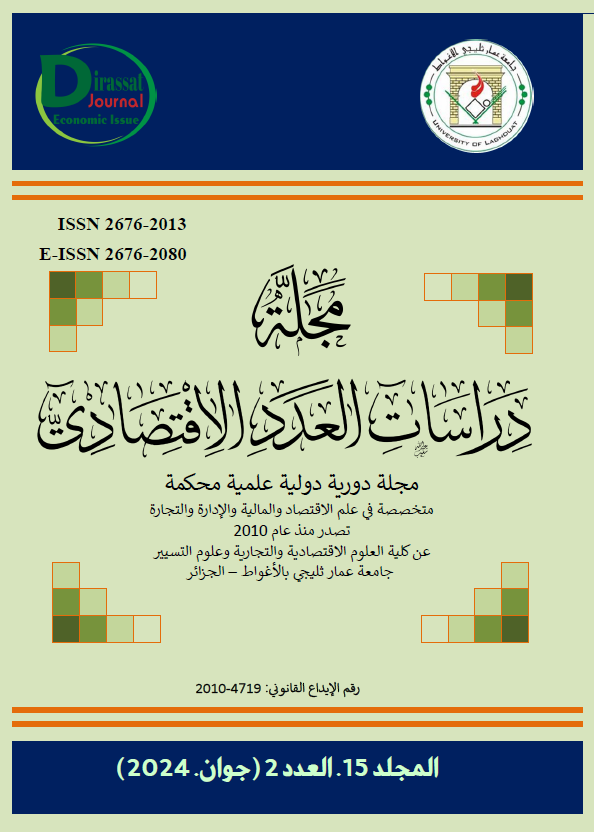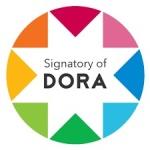The impact of the Kanban model on Toyota's agility
Résumé
This study investigates the working mechanisms of agile organizations by exploring theoretical concepts associated with their practices and applications. The Kanban model is examined as one of the key models contributing to organizational agility, particularly in the context of Toyota's operations. The study focuses on the implications of applying Kanban principles, including visualizing the workflow, limiting work in process, managing the flow, and pulling systems, in improving Toyota's agility. The results show that the implementation of the Kanban model has a significant positive effect on Toyota's agility, highlighting the model's potential as a key driver of organizational agility.
##plugins.generic.usageStats.downloads##
Références
Aggarwal, A., Kumer, S., & Sikor, T. (2005). TOYOTrizzed: How the celebrated TOYOTA Production System is a TRIZ derivative. The TRIZ Journal.
Agnieszka, R., & Ewa, B. (2020). Leadership as one of the Factors Shaping the Development of an Agile Organization. Review of Integrative Business and Economics Research, 9(3).
Anoop, G., & Muhammed, V. (2020). A Brief Overview on Toyota Production System (TPS). International Journal for Research in Applied Science and Engineering Technology, 8(5), 2505-2509.
Apreutesei, M., Arvinte, I., Suciu, E., & Munteaunu, D. (2010). Application of kanban System For Managing Inventory. Bulletin of the Transilvania University of Brasov, vol. 3, no.52, 161-166.
Azam, K., & Mehrzad, N. (2014). Study the Effect of Organizational Factors to Implementing the Agility Strategy in Isfahan Municipality. International Journal of Academic Research in Business and Social Science, 4(1).
Batth, V. (2021). Toyota motor corporation: Just in time (jit) management strategy or beyond. Journal of Case Research, 12(1), 18-27.
Benders, J., & Morita, M. (2004). Changes in Toyota Motors' operation management. International Journal of Prouduction Research, 42(3), 433-444.
Bundtzen, H., & Hinriches, G. (2021). The Link Between Organizational Agility and VUCA-An Agile Assessment Model. SocioEconomic Challenges, 5(1), 35-43.
Damij, N., & Damij, T. (2021). An approch to optimizing Kanban board workflow and shortening the project management plan. IEEE Transactions on Engineering Management, 1-8.
Deniz, N., Aral Noyan, & Öznur Gülen Ertosun. (2015). Linking person-job fit to job stress: The mediating effect of perceived person-organization fit. Procedia - Social and Behavioral Sciences, 207, 369-376.
Flavia, C. G., Radu, G., & Joao, C. M. (2019). Continious improvement in an indistrial unit of the wood industry through Kanban. 24th International Joint Conference on Industrial Engineering and Operations Management. 281, pp. 167-176. Libson: Springer.
Funda, ç., & Ebru, T. (2022). Agility and Agile Organizations from Employees Perspectives: A qualtitive Research in the Context of the Saas Business Model. International Journal of Management Economics and Business, 1128-1149.
Ghozali, M., Diekola, M., Imran, K., & Othman, A. (2022). A Framework for implementing a Supplier Kanban System through an action research methodology. Benchmarking: An International Journal.
Grant, M., Maneesh, K., & Ann, E. (2014). Supplier replenishment policy using e-Kanban: A framework for sucessful implementation. Production Planning& Control: The management of Operation, vol .25, no .2, 161-175.
Hamza, A., Mazni, O., & Rohiada, R. (2019). The State Of The Art Of Agile Kanban Method: Challenges And 0pportunities. Independent Journal of Management& Production (IJM&P), 12(8).
Head, K., Ondracek, J., Saeed, M., Peterson, K., & Bertsch, A. (2023). Toyota Motor Corportion: Managing Corporate Resources Through Strategic Perspectives. Splint International Journal of Professionals, vol 10(1), 1-24.
Houti, M., Abbadi, L., & Abdellah, A. (2017). E-Kanban the new generation of traditional Kanban system, and the impact of its implementation in the entreprise. Proceedings of the International Conference on Industrial Engineering and Operations Management, (pp. 1261-1270). Morocco.
Hwang, J. Q. (2017). Application Of Pull/ Kanban System To Reduce Inventory And Lead Time In Manufactoring System. Universiti Sains Malaysia.
Jan , B., & Liudmila, B. (2018). Transparency in project Management-From Traditional to Agile. Proceeding of the Third International Cnference on Economic and Business Management.
Katalin, B. (2020). The concept and competitiveness of agile organization in the fourth industrial revolution's drift. Strategic Management and Decision Support Systems in Strategic Management. 25. Strategic Management.
Koskela, L., Tezel, A., & Tzortzopoulos, P. (2016). Visual management in production management : a literature synthesis. Journal of manufacturing technology management, 27(6), 766-799.
Kumar, C., & Panneerselvam, R. (2007). Literature review of JIT-KANBAN system. The International Journal of Advanced Manufacturing Technology, 32(3), 393-408.
Kumkale, I. (2016). Organization's Tool for Creating Competitive Advantages: Strategic Agility. Journal of Social Science, 2(3).
Laura, D., & Carmen, V. (2012). Cross-functional Teams and their Role in Increasing Competitiveness of the Organizational Partnerships. European Integration Realities and Perspectives. Performance and Risks in the European Economy.
Liker, J., & Morgan, J. (2006). The Toyota way in services: the case of lean product development. Academy of management perspectives, 20(2), 5-20.
Maria, M., Jesus, E., Jorge, L., Claudia, C., Juan , A., & Rubén, J. (2018). Impact of the Planning From the Kanban System on the Company's Operating Benefits. Sustainability, 10(7).
Mehmet, B. (2021). The Advantage of Being an Agile Organization in the Pandemic Crisis. Journal of Strategic Management Research, Vol 4(2), 123-141.
Minh, N. (2023). Toyota's production efficiency improvement management: best practice for productivity evaluation and operation improvement. Journal of Advances in Management Research, vol 20(3), 385-408.
Muris, L., & Moacir, G. (2019). Variation of the Kanban system: Literature review and classification. International Journal of Production Economics, 125(1), 13-21.
Naufal, A., Jaffar, A., Yussof, N., & Hayati, N. (2012). Development of Kanban System at Local Manufacturing Company in Malaysia Case Study. Procedia Engineering, 1721-1726.
Necmettin, O., Mehmet, ş., & Büşra, ö. (n.d.). Towards a Better Understand.
Ozkan, N. G. (2020). Towards a Better Understanding of Agile Mindest by Using Principales of Agile Methods. Conference on Computer Science and Information Systems (FedCSIS), (pp. pp. 721-730).
Pedro, O., & Aleda, V. (2012). Service orientation: the derivation of underlying constructs and measures. International Journal of Operations& Production Management, vol 32(2), 156-190.
Rahman, N., Sharif, S., & Esa, M. (2013). Lean Manufacturing Case Study with Kanban System Implementation. Procedia Econ. Finance, 174-180.
Rajat, B., Wakode, L., & Raut, P. (2015). Overview on Kanban Methodology and its Implementation. International Journal for Scientific Research& Development, vol 3(2), 2518-2521.
Rantala, J. (2018). Applicability of Lean Principales and Kanban Method in Managing SaaS Delivery Projects and Tasks. Master's Thesis.
Reto, V. (2019). Agile project management method Kanban.
Richard , A. (1986). An Adaptive Planner. Conference On Artificial Intelligence, 1.
Richard, P., Debra, A., & Donald, R. (2001). Understanding the fundamentals of kanban and CONWIP pull systemsusing. Proceedings -winter simulation Conference. 2. IEEE.
Rmnath, B., Elanchezhian, C., & Kesavan, R. (2009). Inventory Optimization Using Kanban System: A Case Study. IUP Journal of Business Strategy, 6(2), 56-68.
Rüttimann, B., & Stöckli, M. (2016). Going beyond triviality: The Toyota production system-lean manufacturing beyond Muda and Kaizen. Journal of Service Science and Management, 9(2), 140-149.
Ryan , S., & Choobineh, F. (2003). Total WIP and WIP mix for a CONWIP controlled jobshop. IIE, 405-418.
Sahiil, M. (2017). Implication of Just -In-Time System of Toyota: A Case study. Master Thesis.
Sarah, M., & Fred, C. (2002). Total WIP and WIP Mix for a CONWIP Controlled Job Shop. IIE Transactions, 35(5), 405-418.
Sendil, K., & Panneerselvam, R. (2007). Literature review of JIT-KANBAN system. Int J Adv Manuf Technol, 32, 393-408.
Shih, W. (2022). what really makes Toyota's production system resilient. Harvard Business Review.
Skeie, T. (2014). Does Limit on Work-In-Progress (WIP) in Software Development Mtter. Master's thesis.
Soliman, M. (2017). A comprehensive review of manufacturing wastes: Toyota production system lean principales. Emirates Journal for Engineering Research, 22(2), 2-10.
Tanner, M., & Dauane, M. (2017). The use of Kanban to alleviate collaboration and communication challenges of global software development. Issues in Informing Science and Information Technology Education, 14, 177-197.
Tezel, A., Koskela, L., & Tzortzopoulos, P. (2009). The functions of visual managemnt. International Research Symposium.
Tomino, T., Park, Y., Hong, P., & Roh, J. (2009). Market flexible customizing system (MFCS) of Japanese vehicle manufacturesrs : An analysis of Toyota, Nissan and Mitsubishi. International Journal of Production Economics, 118(2), 375-386.
Vijaya, R., Elanchezhian, & Kesavan, R. (2010). Application Of Kanban System For Impleminting Lean Manufacturing (A Case Study). Journal of Engineering Reserarch and Studies.
Wada, K. (2020). The Evolution of the Toyota Production System. Berlin, Heidelberg, Germany: Springer.
Copyright (c) 2024 Inas Hachemi , Madiha Bakhouche

Ce travail est disponible sous licence Creative Commons Attribution - Pas d’Utilisation Commerciale 4.0 International.
















